Rorschach Blots
The Rorschach images presented in conjunction with "Bats and Dancing Bears: An Interview with Eric A. Zillmer."
WARNING: The Rorschach images presented below are the ones Rorschach published with Ernst Bircher Publishers in Switzerland in 1921. When Hans Huber, an employee of Bircher’s, established his own publishing company, he bought the rights to the Rorschach tests. Huber’s company in Bern has held the rights ever since. For reasons of trademark, Rorschach blots seen in popular culture have always been substitute images. According to the US Patent and Trademark Office, however, the copyright for the original Rorschach images has very recently run out in the US. While it is now legal to print these images, looking at them outside the test environment and reading others’ responses to them may affect and render invalid the results of anyone later looking at the images under test conditions. Please take this into consideration before scrolling down or reading the protocols from Göring, Speer, and Eichmann.
These images and responses were originally published in issue 5 with “Bats and Dancing Bears: An Interview with Eric A. Zillmer.”
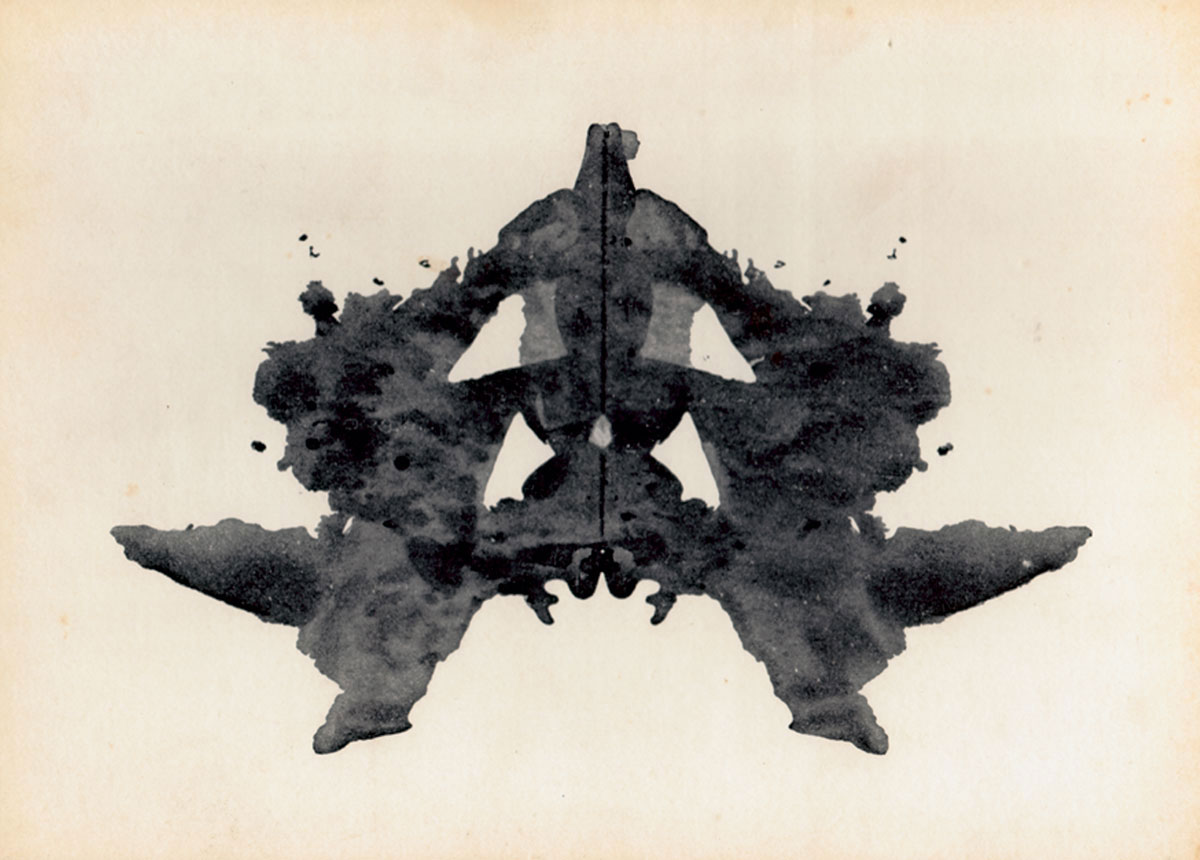

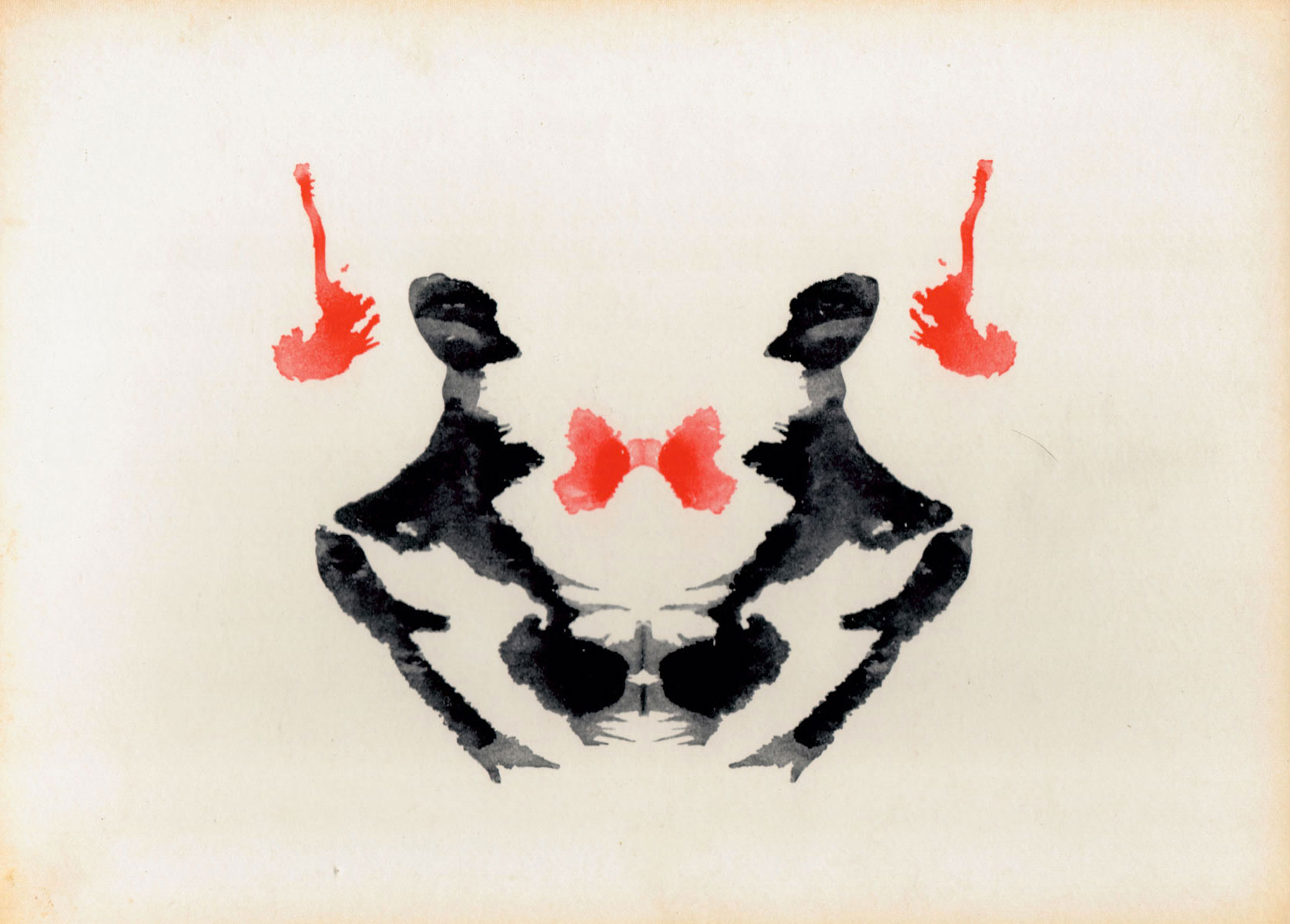
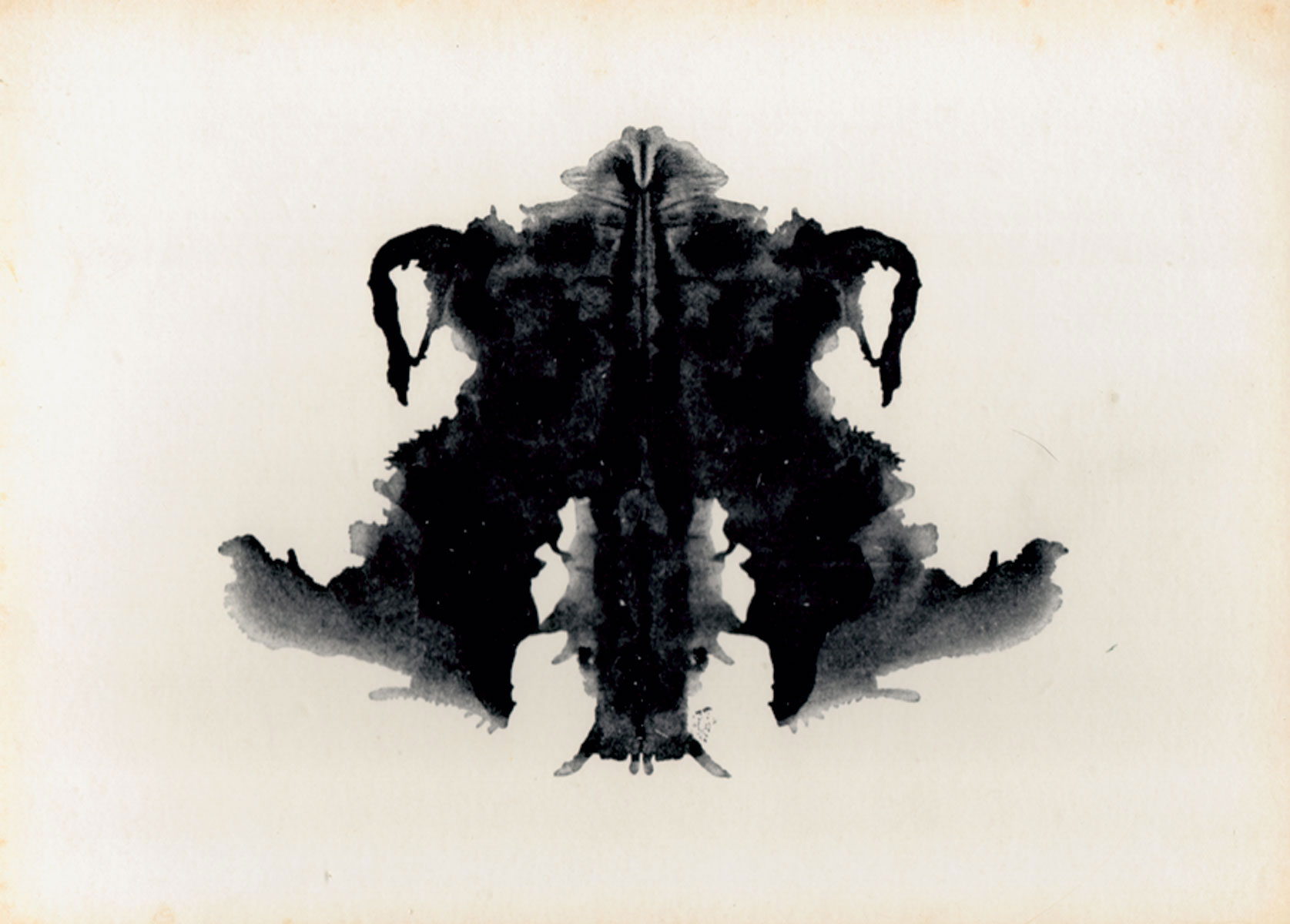
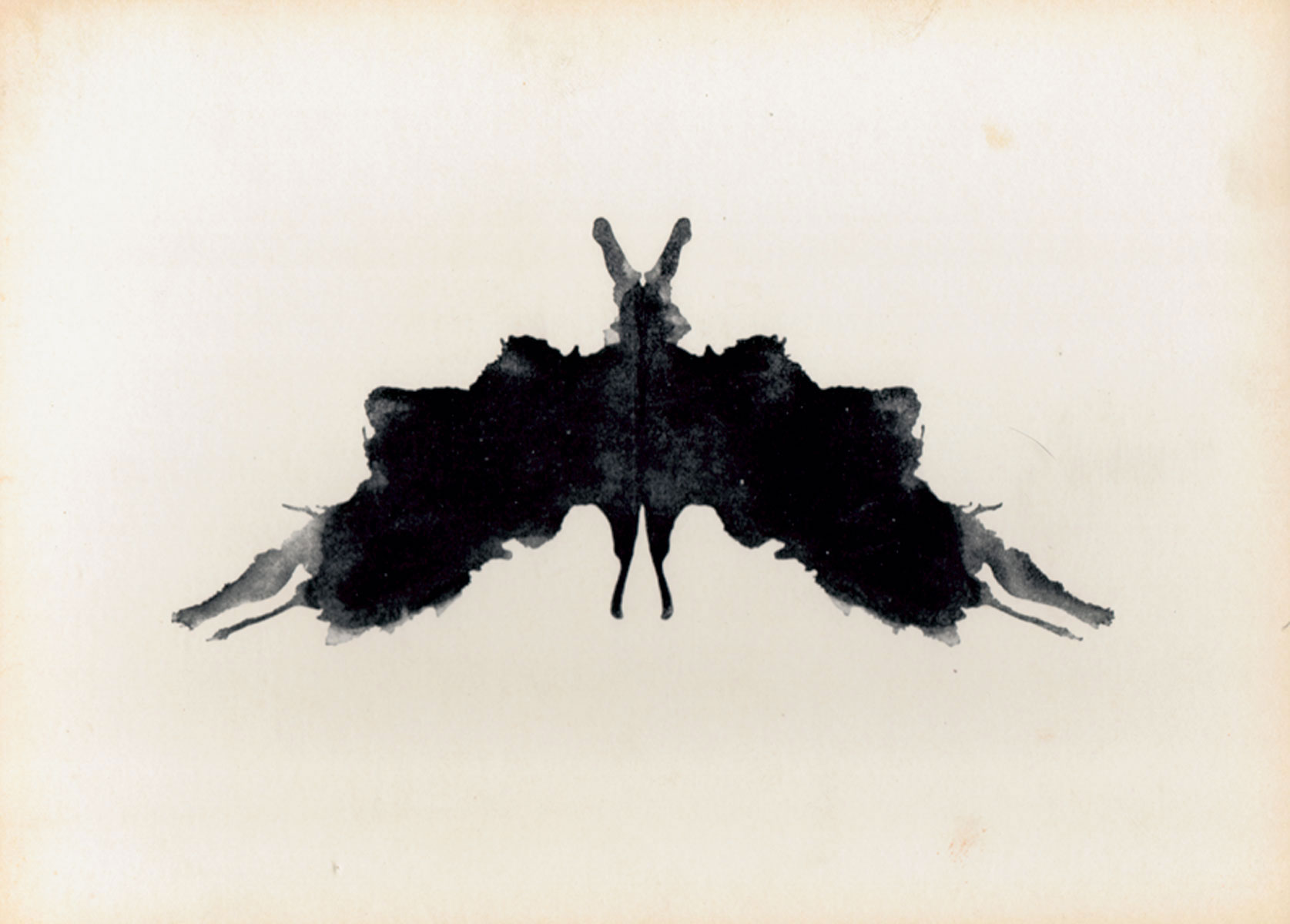
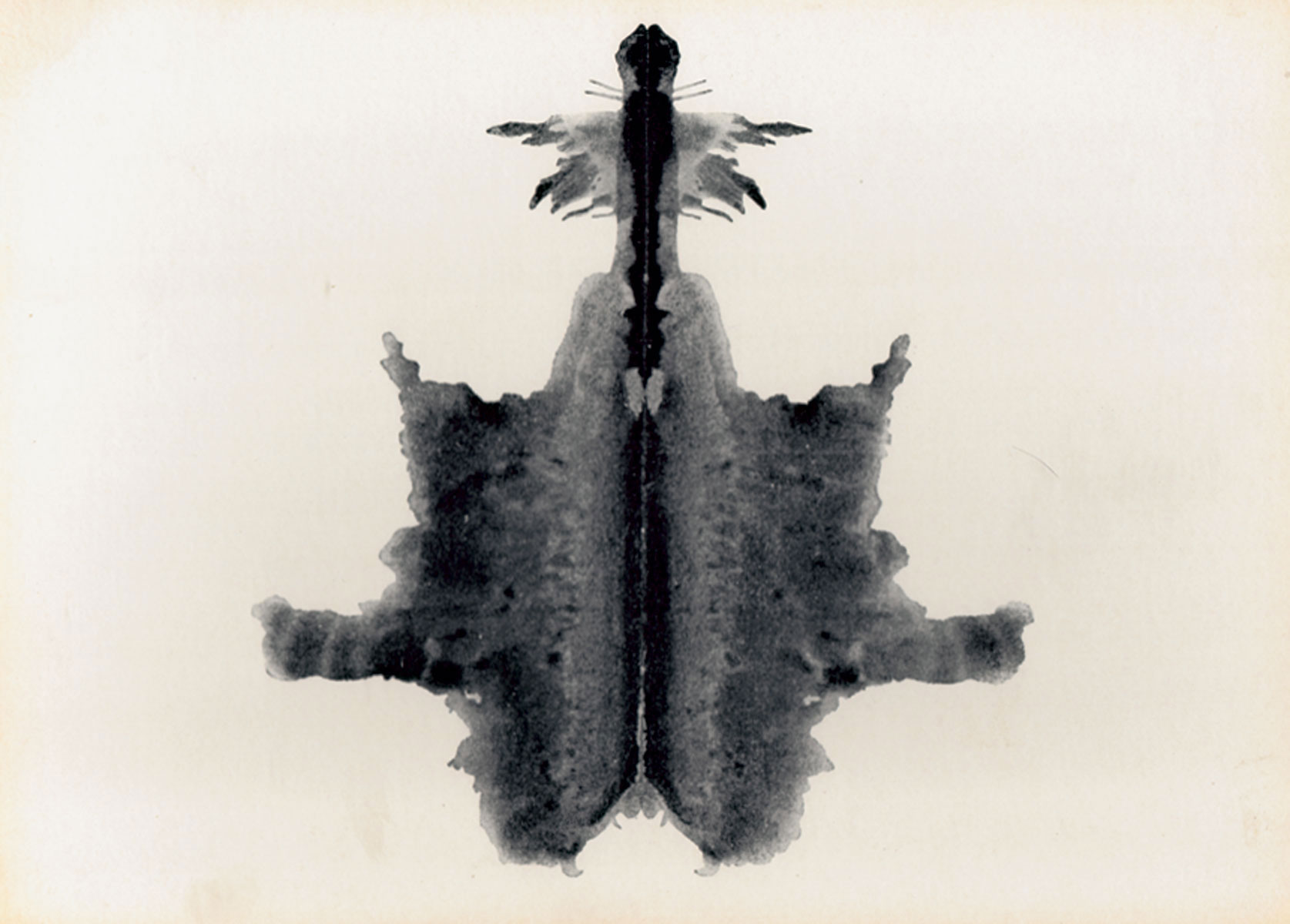
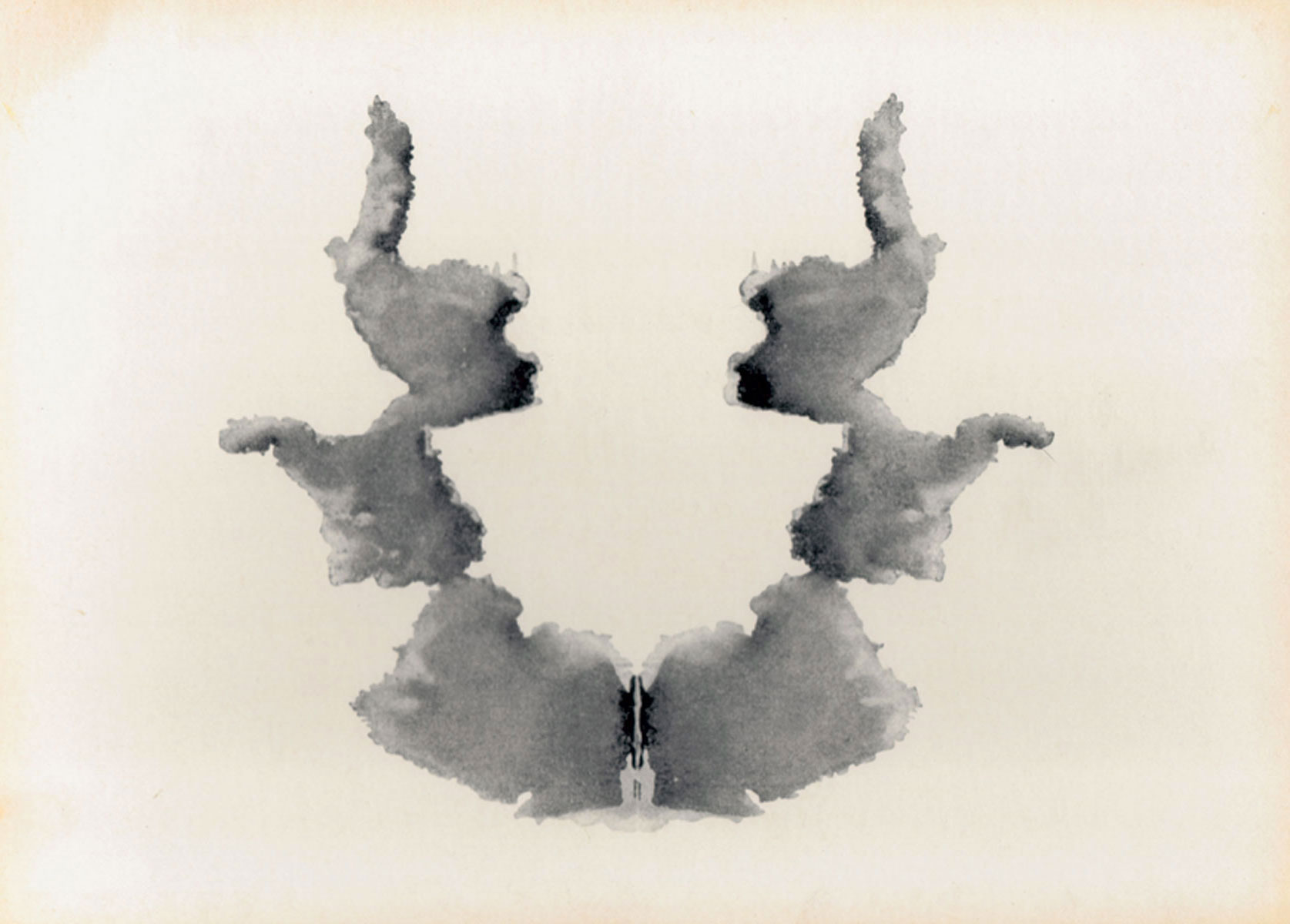

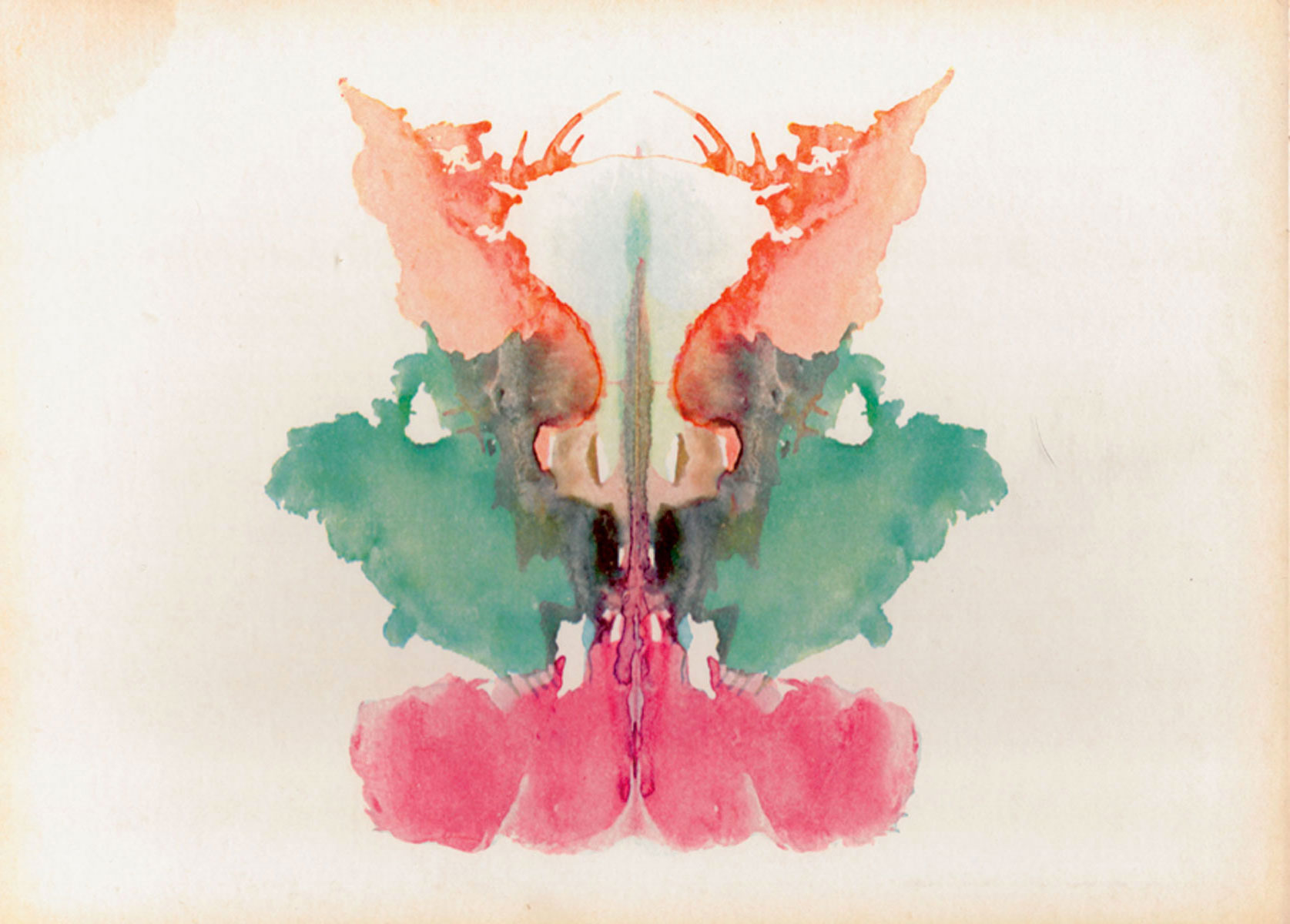
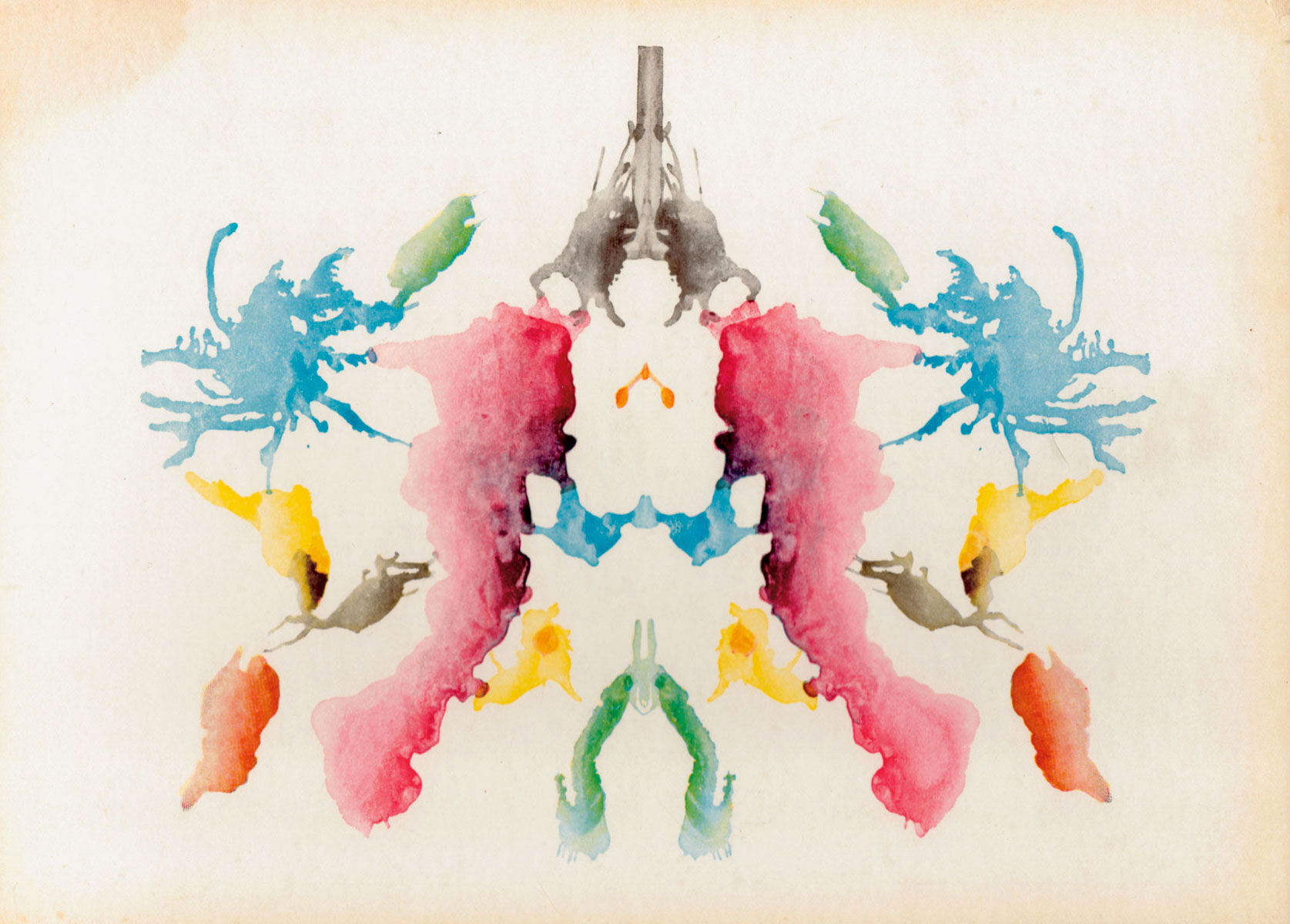
Age: Approximately 55
Date of testing: 1960-1961 (specific date unknown)
Card 1
Bat, from a collector or a museum, with spread-out wings.
Card 2
Two brown bears pressing against the glass, hats on their
heads which are blown away as in dueling. Even the snout
is drawn on the left one, and the ear on the right one.
Very clear bear ears. Quickly drawn with sketching ink.
Card 3
(“This is also a humorous sketch”)
a. Two very polite dandies tipping their hats to each other.
Greeting each other very formally; there are even patent
leather shoes there.
b. Two clowns who want to do their best, masked; white
collars at the neck.
c. The red could be an eye-catching stage decoration in the
background.
Card 4
A stretched-out cowhide, stretched for drying, or already
treated. It is also trimmed—the forepaws and the rear. The
head is very badly drawn; the backbone well drawn; it also
goes well toward the side.
Card 5
Bat, much better than the first one.
Card 6
a. Also a skin, but the head part doesn’t fit—also a skin of
a wild animal.
b. The head part like the head decoration of the Aztecs.
Card 7
Outlines of continents, if I cover the lower part.
Returns to Card 5
a. South America down to Tierra del Fuego; Caribbean Sea
with Brazil , Argentina, Chile.
b. Again, a humorous drawing; two dancing elephants,
trunks raised, eyes slightly indicated, standing on one foot.
Card 8
A leaf chewed up by insects, pressed for [display in] a herbarium;
the color shading would look different in a fall leaf.
But there is a leaf in Argentina whose color is similar.
Card 9
A coat of arms [covers half]; above is the helmet. Heraldry in
the middle, drawing below, but one side must be covered.
It’s more the color.
Card 10
a. A colored drawing from botany, a flower with pistil and
stamens.
b. A detailed drawing of stamens, drawn for a better view
for school use.
• • •
Subject: Hermann Göring (1893-1946)
Age: 52
Estimated IQ: 138 (Very Superior Range; 99th percentile)
Date of testing: 9 December, 1945
Card 1
a. Funny beetle. Just the shape.
b. A bat. It is the shape of a bat, but really not so good; the
gray-black color gives an involuntary impression of a night
animal.
Card 2
[Laughs] Those are two dancing figures, very clear, shoulder
here and face there, clapping hands. [Cuts off bottom
part with hand, including red]. Top red is head and hat; face
is partly white.
Card 3
a. Two caricature figures, with high collar like Schacht…but
the red spots…I can’t figure that out…[gets impatient, snaps
forefinger at three red spots as though to brush them off]
what these things are…damned if I know…
They are debating over something… maybe two doctors
arguing over the inner organs of a man [laughs]
b. …You might also say that it is an opened figure of one
man—opened up, with two identical halves and the inside
s in the middle [points to lower detail and center red—offers
the idea as thought not to be taken seriously]. Yes, of
course, the opened man…[brushes it off—turns card down,
ready for next one]
Card 4
Funny animal, sea animal, the kind you make smoked fish
out of, has eyes. Just the structure.
Card 5
Night animal—a flying animal, not exactly a bat—It is very
symmetrical: if you fold it together, it’s the same. It is more
like a bat…the dark color is important.
Card 6
Hide of an animal—here are the legs and the backbone
line—a bedroom rug…this way [turns it], I don’t know — this
thing here [top] I can’t figure out. [Puts card away]
Card 7
A face—grotesque—half-man, half-animal.
Card 8
a. Only two things clear here—two animals climbing up,
very clear.
b. Fantastic sea plants in the middle.
Card 9
a. Very fantastic plant.
b. There are the trolls from Peer Gynt.
Card 10
a. Two crablike animals
b. Two troll figures, or parrots.
c. Little dogs. They are sitting on their haunches.
d. Fantastic profiles—I don’t know what the blue stuff is that
they are blowing out. Grotesque caricature—not really alive.
• • •
Subject: Albert Speer (1905-1981)
Age: 40
Estimated IQ: 128 (Very Superior Range; 97th percentile)
Date of testing: 30 October, 1945
Card 1
Like a bug; but I don’t know any bug that looks like that.
Center part looks like a shelled bug because of the shape;
not alive.
Card 2
A butterfly. [Testing the limits: cannot see dancing figures]
Card 3
a. Could be a drawing by Kubin, can hardly say what [stalling].
[a. is tentative, stalling, until he decides on b.]
b. Could be two people daubed on the card [very uncertain].
Well, it’s expressionistic, but very vague. They have arms,
legs, high collars. No, I paid no attention to the red spots.
Card 4
[Comment: “This is damned hard.”]
Cross between a bug and a butterfly.
Card 5
A butterfly…a bit clearer. [Comment: “I understand architecture
better.”]
Card 6
[Promptly rejected. Testing the limits: Rejects suggestion
of sex.]
Card 7
[Rejected. Testing the limits: Cannot see suggested women.]
Card 8
[Blinks in surprise]
Coat-of-arms, two animals on the side, butterfly on bottom
and parts on top belong to design.
Card 9
[Rejected. Studies it. Gives up after 2 1/2 minutes.]
Card 10
[Comment: “Too torn apart, can’t make out a thing.”]
Could call this a sea-horse….
Bottom figure could be cross-section of a flower.
[Comment: “My fantasies run into musical channels. I can entertain myself here in the cell for hours by running over classical musical interpretations in my mind. But I can’t visualize very well.”]
- These records are adapted from the Appendix of Eric Zillmer’s book The Quest for the Nazi Personality, which presents the verbatim responses of 23 Nazis to the Rorschach blots.
Spotted an error? Email us at corrections at cabinetmagazine dot org.
If you’ve enjoyed the free articles that we offer on our site, please consider subscribing to our nonprofit magazine. You get twelve online issues and unlimited access to all our archives.